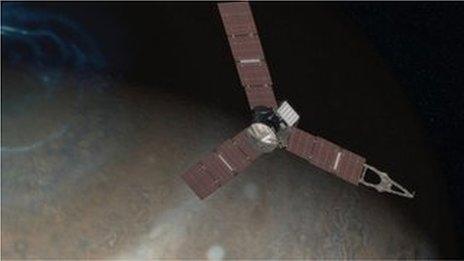Jupiter: Nasa take pic of spooky 'face' in clouds over the planet
- Published
- comments
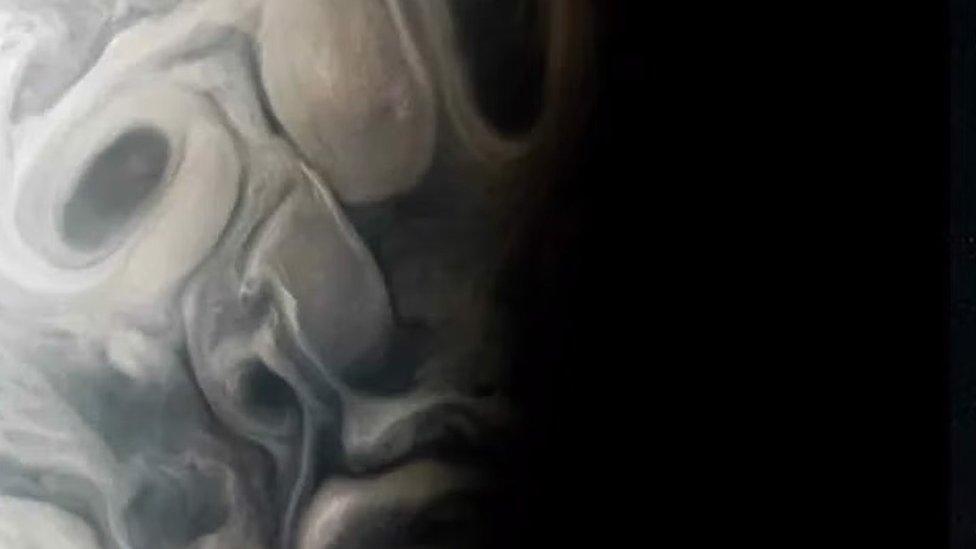
Can you spot the 'eyes' and 'mouth'?
Nasa has captured a spooky 'face' in the clouds of Jupiter in a new picture of the planet.
Jupiter's clouds often make all kinds of interesting shapes - but this one looked like it had eyes and a mouth!
The photo shows swirling clouds and turbulent storms on Jupiter, which resemble a spooky frowning face.
The planet - which is the biggest in the solar system - has huge storms caused by its strange atmosphere.
The photo was taken by Nasa's Juno spacecraft, which orbits Jupiter.
How did the spooky face form?
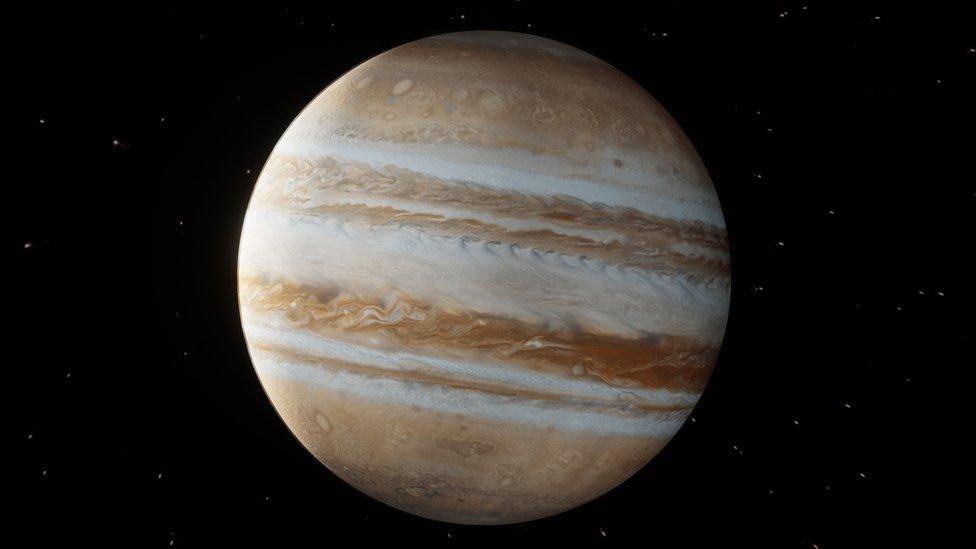
The swirling shapes on Jupiter are caused by storms
As well as being the biggest, Jupiter is also the stormiest planet in the solar system.
This is because it spins around really quickly.
One day on Jupiter is 10 hours, compared to Earth's 24.
This means it spins much faster than Earth, and when you combine that with a big planet, expect stormy conditions.
Jupiter doesn't have a solid surface, like Earth, to slow storms down. These crazy movements make all sorts of shapes - like the weird, spooky face.
Winds on Jupiter can reach up to 335 miles per hour!
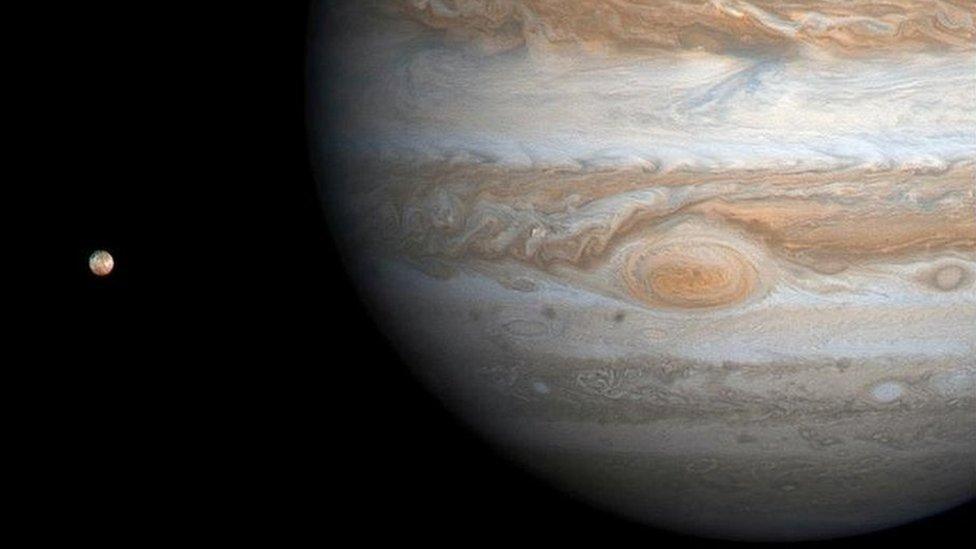
Jupiter and its biggest moon Ganymede which is just less than half the diameter of Earth
We can't talk about Jupiter's storms without looking at the iconic big red spot.
This spot is twice the size of Earth, and is caused by rising and falling warm and hot storms.
We've learned a lot more about the big red spot in the past few years thanks to the Juno probe.
The probe discovered that the spot is actually a lot bigger than we originally thought.
Nasa also found out that the storm is slowly shrinking in size, but it still is extremely deep.
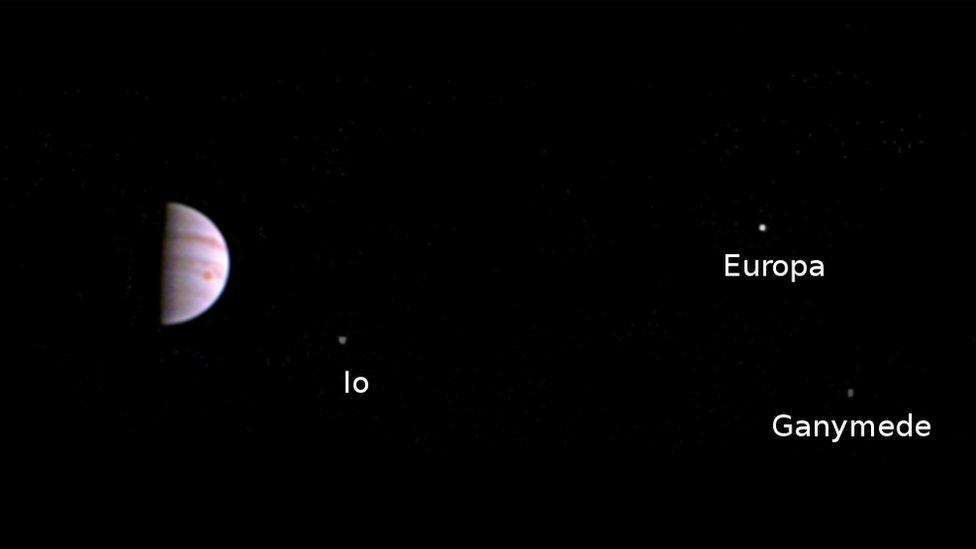
Jupiter has the most moons of any planet in the solar system
The Juno mission is continuing until 2025.
The spacecraft will conduct close flybys of Jupiter's moons - Ganymede, Europa, and Io.
Jupiter also has some very faint rings around it, which the craft is going to inspect whilst it's out there too.
- Published5 July 2016
